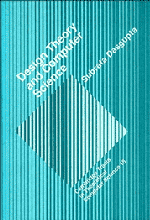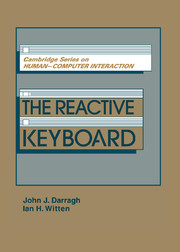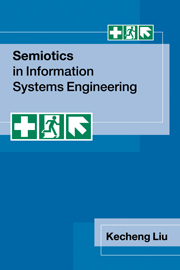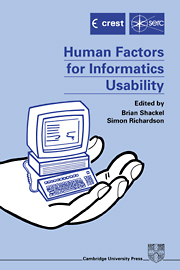People and Computers III
This book presents the proceedings of HCI '87, the major annual European conference on human computer interaction to be held in Exeter from 7–11 September 1987. The papers of People and Computer III reflect the goals of the conference: to represent the current state of human computer interaction; to increase communication between people working in the different disciplines within human computer interaction and; to discuss the future developments within the field. Contributions are included from leading researchers and designers in both industry and academia. The book represents a comprehensive guide to current research in human computer interaction which will be essential reading for all researchers, designers and manufacturers whose work impinges on this rapidly moving field. It will be of particular interest to researchers in computer science, ergonomics, electrical engineering and psychology, and to others concerned with improving communications between people and computers.
Product details
February 1988Hardback
9780521351973
492 pages
240 × 152 × 25 mm
0.669kg
Unavailable - out of print
Table of Contents
- Preface
- 1. Satisfying goals: an introduction to people and computers III Dan Diaper
- Part I. Evaluation in Early Design:
- 2. The incorporation of early interface evaluation into comand language grammar specifications Brian Sharratt
- 3. Analysis of communication tasks for the design of a structured messaging system Paul Buckley and Peter Johnson
- 4. Human factors and the problems of evaluation in the design of speech systems interfaces Dylan Jones, Kevin Hapeshi and Clive Frankish
- Part II. Design Methods:
- 5. Patterned systems design - HCI in commercial data processing Brian Shorrock
- 6. Describing a product opportunity: a method of understanding the users' environment Andrew Hutt, Nick Donnelly, Linda Macaulay, Chris Fowler and Deborah Twigger
- 7. The travel metaphor as design principle and training aid for navigating around complex systems Nick Hammond and Lesley Allinson
- Part III. Computers and Education:
- 8. Human factors in systems design: a case study Christopher Finch Reynolds
- 9. A flexible negotiable interactive learning environment Rolf Ferm, Mikael Kindborg and Anita Kollerbauer
- 10. The drexel disk: an electronic 'guidebook' Thomas T. Hewett
- Part IV. Analysis for Early Design:
- 11. Preliminary analysis for design Mark Keane and Peter Johnson
- 12. Refining early design decisions with a black-box model Andrew F. Monk and Alan Dix
- Part V. Pictorial Interfaces:
- 13. Pictorial knowledge bases P. G. Barker and K. A. Manji
- 14. Visual languages and human computer interaction Mikael Kindborg and Anita Kollerbaur
- 15. Video browsing and system response time John F. Patterson and Carmen Egido
- Part VI. Systems and Interfaces:
- 16. Formally-based techniques for dialogue design Heather Alexander
- 17. The myth of the infinitely fast machine Alan J. Dix
- 18. INTERA/P: A user interface prototyping tool Osamu Hashimoto and Hitoshi Miyai
- Part VII. Writer's Assistant:
- 19. Designing electronic paper to fit user requirements Cathy Thomas
- 20. Human-computer factors in the design of a multimedia authoring environment Diana Burkhardt, Bob Hendley, Peter Jarratt, Nick Jurascheck, Jim Yandle, Joseph Awumee, Paule Chicken and Gillian Weston
- Part VIII. Control Systems' Interface:
- 21. Automation - implications for knowledge retention as a function of operator control responsibility C. S. Narborough-Hall
- 22. A human-computer interface for control system design H. A. Barker, P. Townsend, C. P. Jobling, P. W. Grant, M. Chen, D. A. Simon and L. Harvey
- 23. Parcel sorting by speech recognition: human factors issues C. R. Frankish, D. M. Jones, C. Madden, K. Waight and J. Stoddart
- Part IX. Intelligent and Adaptive Interfaces:
- 24. Expert systems - interface insight Anne Morris
- 25. Some critical remarks on abstractions for adaptable dialogue managers Gilbert Cockton
- 26. An evaluation of the effectiveness of the adaptive interface module (AIM) in matching dialogues to users C. J. H. Fowler, L. A. Macaulay and S. Siripoksup
- Part X. Psychology of Users:
- 27. Planning in the context of human-computer interaction Richard M. Young and Tony Simon
- 28. Knowledge acquisition and conceptual models: a cognitive analysis of the interface Andrew Dillon.






